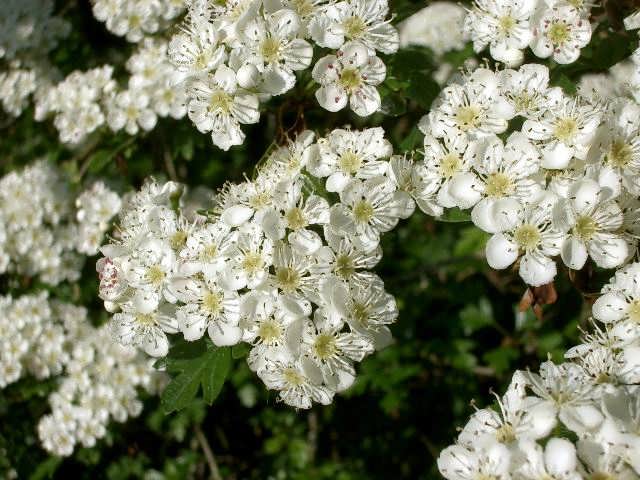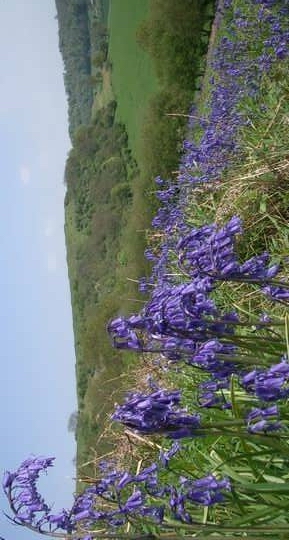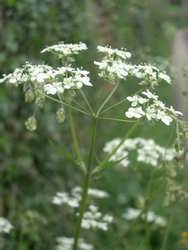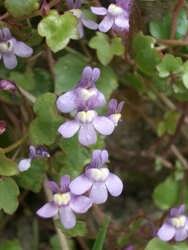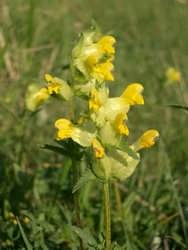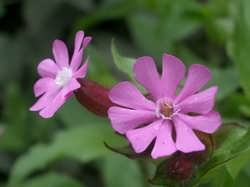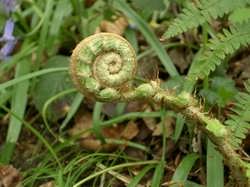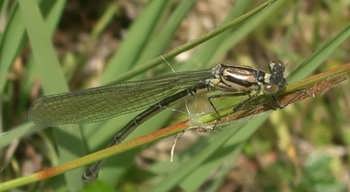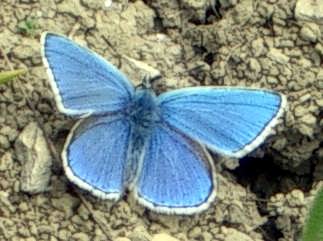When to Watch Wildlife |
J | F | M | A | M | J | J | A | S | O | N | D | Search |
Current wildlife highlights |
||
|
What's new on this site |
||
|
Wildlife calendar |
||
|
Plants and Animals |
||
|
Habitats |
||
|
Wildlife sites |
||
|
WWW links |
||
|
Guide Books |
||
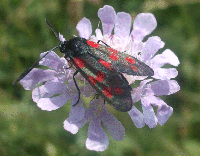 |
||
|
© PMcS 2006 |
|
May |
|||||||||
|
|||||||||
This month look
for:
The month of May is a wonderful time to see wildlife. Our
summer migrants are here and their songs are mixed in with the
residents. Summer specialities such as nightingale,
cuckoo, swifts and swallows bring a special edge to
wildlife watching. Warblers fill the woodlands and hedgerows and
the sea cliffs clammer with breeding birds fighting for their own little
space. In the gardens and parks blue tits, great tits,
robins, blackbirds and song thrushes lead a frantic
life seeking food for the insatiable appetite of their young.
After one or two broods the blue tits particularly look frazzled.
Many of the trees and hedgerow shrubs were breaking into leaf by the
middle of April and are now festooned with bright, fresh almost
iridescent young leaves. The blackthorn flowers are over
and have turned brown, but the hawthorn flowers (or 'may')
provides breathtaking white ribbons crisscrossing the countryside and
lining even the most uninspiring roads. Towards to end of the
month the elder also flowers with big odorous saucers of tiny
flowers. The young oak leaves start off brown and then turn
light green and only later take on a darker green hue. The ash
is one of the last to break into leaf. Its mat black hard casings
eventually split to reveal the new expanding growth below. The ash
will be one of the first to lose its leaves too, but in May such
thoughts of Autumn seem a long way off.
The spring flush of grass growth is already over. On the meadows that have escaped modern intensification, the diversity of flowers and grasses provides a spectacular show. Yellow rattle, dandelions, buttercups species, meadow vetch and oxeye daisy are sometimes joined by common spotted orchids. On the downland, where floral diversity is at its best in the countryside, the colours and scents are complimented at the end of the month by the brilliance and beauty of the some of the early blue butterfly species feeding amongst the flowers. |
|||||||||
| Habitats and species |
|||||||||
|
Parks and gardens: Gardens are blooming and some fledglings are
already leaving nests. However in the main the adults are
gathering, worms, caterpillars, and even green fly in lean years, for
their young. |
|||||||||
|
Woodlands (including wood pasture): The woodland flora is at its best in late April and early May, and the woodland floor is awash with bluebell flowers. In the damper woodlands these are often mixed in with, or replaced by, the white flowers and pungent wide leaves of the ramsons. Ramsons give off a powerful garlic smell when crushed under foot and are often called wild garlic. The canopy will soon close over and darkness descend onto the woodland once more. Then the birds will fall silent having staked their claims, nurtured their young and fledglings flown the nest. In May however activity is happening everywhere. Look out for hole nesting greater spotted woodpeckers (who you may hear drumming) and whose old nests are adopted by birds such as tits, red starts and starlings. The woodland bird song is at its peak in May from the gentle warble
of the turtle dove to the explosive songs of the blackcaps,
garden warblers and wrens. |
|||||||||
|
Arable and hedgerows: In some arable field edges the first
poppies show off their red faces. Their petals are paper thin and
fall off almost immediately if picked. Poppies are no longer so
prevalent in arable landscapes, as they must have once been, now that
farmers are so thorough with their herbicides. Just occasionally a
field is missed for some reason and a scarlet steak of poppies can be
seen from miles away. |
|||||||||
Road verges: Cow parsley is now profuse in the hedgerows with
its white umbellifer flowers festooning many road verges. It
competes with false oat grass, white dead nettle, broad-leaved
dock, nettle, jack-by-the-hedge and cleavers
for space. Red campion and greater stitchwort
replace the early spring flowers. On dry stone walls the fleshy
round wall pennywort leaves mix with flowers of the ivy-leaved
toadflax, which resemble miniature mauve snapdragons flowers.
Ferns have started to elegantly unfurl their fronds - as process
known as 'circinate venation'. |
|||||||||
|
Chalk and limestone grasslands: The downlands and the limestone
grasslands are at there best in May, June and July. The colours of
the flower start off largely yellow and move through to reds, mauves and
purples. |
|||||||||
|
Meadows (neutral) and flood plain grasslands: May and June are the
best times to sees meadow flowers before the hay is made in July.
The wet fringes of meadows often play host to horsetail,
pennywort and ragged robin. |
|||||||||
|
Acidic grasslands: |
|||||||||
|
Heathlands:
The heaths are now awash with yellow gorse. In the pools
dragonflies dart backwards and forwards, some aggressively protecting
their territories and some on a hunting mission. They can become
prey to the ultra fast hobby. Birds of the heathlands such as whinchats and stonechats clack from bush tops, showing off their bright orange colouration. Form the silver birches tree pipits make their song sorties, descending with a high pitched piew-piew-piew. In wet hollows the fly catching sundews shine like red pearls - but they have a murderous secret. Their sticky hairs are not to feed but to catch insects. Once caught the plant digests them to make up for the low nutrients in the soil.
Cotton-grass (which is actually a sedge) spreads along hollows and with its white fluffy 'flowers' dangling from its stems. Some heathlands are home to the rare nightjar. Its wide
gape is used at dusk to sweep for moths and other night flying insects
as it scythes through the air. It is most likely to be heard, with
its charring call cutting through the still night air, before it is
seen. |
|||||||||
|
Mountain and Moorlands (uplands): |
|||||||||
|
Rivers
and ponds (including bogs and mires): In May the short lived adult
mayfly emerges only to mate and then die after 24 hours. It
is not for nothing that their latin name is based on the word
ephemeral! The nymph stage lives for a year and needs clean
water. Mayflies are an important food source for many fish.
Water crowfoot thrives in the clear streams forming an important
waving its white flowers and filamentous green leaves in the rushing
current. It provides shelter for many insects. The golden yellow
flowers of the bold marsh marigold form large clumps crowning the
fleshy leaves at the rivers edge and where the ground is damp. |
|||||||||
|
Sea
and the sea shore (including estuaries): |
|||||||||
|
Mammals: As
the insect population has now increased bats are out in force swooping
through the air using their sonic location equipment to hunt them out.
In gardens strange noises emerging in the night may well be mating
hedgehogs. It is hard not to recall the old joke: 'how do
hedgehogs mate'...'carefully!'. |
|||||||||
|
Birds: Woodlands,
hedgerows, heathlands, wetlands and sea cliffs provide perhaps the best
bird watching at this time of year. You may be lucky enough to
find broken eggs shells on lawns. These may have not been predated
but are likely to have been shells ejected from local nests. The
adult bird will take the shell, once the nestling has hatched, some
distance away from the nest in order not to attract predators. |
|||||||||
|
Amphibians & Reptiles: |
|||||||||
|
Insects:
Insects start to make a big impact this month, quite literally. If
you hear a thump against the outside of a window it may well be a
cockchafer beetle. This is one of our largest beetles and the
brown, slightly fury adult appears in May, and heads towards street
lights and lit windows in search of a mate. The pupae live for two
years as plump 'c' shaped larva in the soil and form an important food
source for rooks and crows. By mid May dragon and damselflies have started to emerge and quickly go about breeding. The adult damselflies bind themselves together whilst the eggs are laid on submerged wetland plant leaves. Some dragonflies are fiercely territorial and you can often witness spectacular aerial clashes between one male and another. However they need to take care as hobbys are now in Britain and with their super fast flight can easily hunt down these impressive insects.
The important mayfly group of insects also emerge in May, as their name suggests. Mayflies only live in clean fast flowing steams where water crow-foot can be found. For this reason they are a good biological indicator of a clean environment. Amongst the insects that have already emerged are some of the blue
butterflies such as adonis, chalkhill and the common
blue. Common blues feed on the flowers of the pea species,
but the adults only have a short three week life span. However as
there are upto three generations in one year you get a number of chances
to see this beautiful insect.
|
|||||||||
|
Plants:
During May we go from only a hand full of flowers, largely in woodlands
and hedgerows, to an explosion of flowering species. |
|||||||||
| Fungi: | |||||||||
All images and text are copyright PMcS 2006
